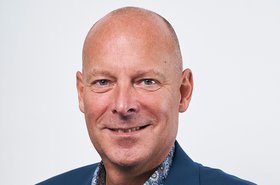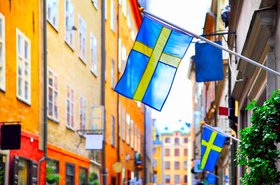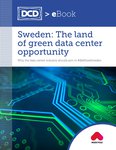Data centers are one of the most important new engines for sustainability. These buildings are what will ultimately underpin our digital future, but what does it actually mean to be a sustainable data center?
Depending on who you speak to, sustainability comes in many different flavors. But without a definitive definition or unified way of measuring it, how can we hope to achieve environmental, social and governance (ESG) goals like net zero, or ensure our industry is reaching its sustainable potential?
According to Stefan Nilsson, sales & marketing manager at Conapto, to define sustainability, we first need to condense it into something more viable.
“First of all, the way we build and design our facilities obviously has an impact on the overall energy efficiency of the data center itself, so it’s very important to design the facility in a sustainable way and to maintain its efficiency over time.”
Nilsson also highlights the importance of closely tracking power usage effectiveness (PUE), or similar. This metric compares the ratio between the total amount of energy a facility consumes and the specific amount of energy that goes into a customer’s equipment.
It is a debated metric and with new technologies such as heat recovery solutions the PUE-metric might not be the best way forward.
Although debated a lot over recent years, PUE still remains one of the most popular tools used by customers and operators alike, to compare the energy efficiency of different facilities. And when customers are essentially paying the electricity bill based on the PUE, maintaining a low PUE number makes commercial sense in more ways than one.
Sustainable steps
Climate Neutral Data Center pact
There are myriad ways to go about achieving sustainability, but some of the most tangible are borne from sustainable initiatives the likes of the Climate Neutral Data Center pact, of which Conapto is a member.
The Climate Neutral Data Center pact is a self-regulatory initiative developed in cooperation with the European Commission, which aims to do what Conapto achieved back in 2019: to make data centers in Europe climate neutral by 2030.
The pact also supports the European Green Deal, which aims to make Europe the world’s first climate neutral continent by 2050. Those joining the pact represent some of the most significant industry players in the region.
Stockholm also has its very own (more ambitious) pact. The Stockholm City Climate Pact aims for a fossil-free and climate-positive Stockholm by 2040, and already has more than 340 members from across the city (Conapto included) – testament to how engrained sustainability is into Swedish culture.
Adding to the sustainable Swedish spirit, Conapto also collaborates with Stockholm Exergi and Sollentuna Energi for heat recovery. This means the excess heat generated (and otherwise wasted) in the data center, is returned to the local district heating network, which is then used to heat up both residential houses and commercial building. Stockholm has one of the world’s largest district heating systems and the addition of heat capacity from data centers is a major contributor to the city’s goal to become climate-positive.
Fossil free data
Conapto holds the ‘Fossil Free Data’ label from Node Pole, recognizing that its three data centers in Stockholm are energy efficient, low in carbon emissions and most importantly, use 100 per cent renewable energy; something Conapto has been doing since 2009.
And it’s the type of energy you choose to run your facility with that Nilsson highlights as the biggest piece of the sustainability puzzle.
“There would be a massive difference between, for example, buying carbon intense electricity in UK or Germany, compared with buying hydro and wind-powered energy in Sweden. That I think are the opposite when it comes to sustainability. To be able to run your facility on at least fossil-free energy is important and on top of that as much renewables as possible,” says Nilsson.
That said, when it comes to the term ‘fossil free’ there is a bit of a caveat in the form of nuclear energy. In geographies where you have an abundance of nuclear, there tends to be less renewables, and where there is nuclear energy, there is also nuclear waste.
“If you compare, for example, France with Sweden, France is very good at nuclear, so they are low on carbon intensity from that perspective and to some extents have ‘green energy’. But they are very low in renewables because they are not good at building out facilities that can do wind, hydro or solar energy.
“That’s the big difference between the Nordic regions and the rest of Europe, in that we have a very solid energy production from renewables. We can buy 100 percent renewables, or we can buy certificates. To be able to say we actually run-on 100 percent renewables sets us apart,” says Nilsson.
Energy matching 24/7
An increasing number of companies are committing to 100 percent renewable energy, but to be able to fulfil that ambition, a way of tracking renewable energy is required. Today this is generally solved using Energy Attribute Certificates, called Guarantees of Origin (GOs) in Europe and Renewable Energy Certificates (RECs) in the US.
Using GOs ensures that the amount of electricity sold corresponds to the amount produced and enables companies to choose their electricity from a specific source, or in Conapto’s case, an exclusively renewable source such as wind, solar or hydropower.
When it comes to energy consumption, since 2021, Conapto has been using Vattenfall’s 24/7 matching. Usually, energy matching of this nature happens on an annual basis. But using SmartUtility, a programme built on Microsoft Azure IoT, Vattenfall has taken it one step further and is able to show energy production hour-by-hour – providing increased visibility for Conapto customers, as well as a huge sustainable advantage.
What remains
As Nilsson explains more of what Conapto does to ensure climate conscious colocation, including the reuse and recycling of electrical equipment, and ensuring all staff are using electric or hybrid vehicles, he rightly points out that no matter what sustainable investments are made, there will always be a small amount of CO2 left over.
“No company can be alive without consuming CO2, as long as we breathe there will be CO2. So we can either say ‘that’s fine, we will have consumed 350 tonnes of CO2 this year, we can’t do anything about it’ or we can do something with that amount and invest a little bit of money into, for example, regions like Africa or Asia, where you actually need to develop sustainable projects. Essentially, making climate investments in countries or parts of the world that actually need it,” says Nilsson.
Location, location, location
The cooling of a data center is far more crucial (and far harder) than powering it up, and the warmer the climate, the harder it is.
“If you’re running a data center in the southern parts of Spain, where you have 40 or 50 degrees in the summertime, you can imagine what type of cooling systems you need to be able to cool down electrical equipment, compared to, for example, running a data center in Stockholm where the average temperature over a year is six to seven degrees,” says Nilsson.
Infrastructure differences between the Nordic and FLAP-D markets (consisting of Frankfurt, London, Amsterdam, Paris and more recently Dublin) also provide the Nordics with a sustainable advantage. District heating systems are something those in the FLAP-D markets just do not have as readily, so as part of sustainability initiatives within the data center, heat reuse is a Nordic benefit that comes for free, or more specifically as a co-investment, together with the district heating owner.
As well as environmental and infrastructural benefits, the price of electricity is also a major factor when it comes to data center location.
“If you compare the electricity price in Stockholm, for example, with UK and Frankfurt, I think that you are probably looking at less than half the price. There is a lot of money to save by putting your data in Stockholm from that perspective,” says Nilsson.
The amount of renewables making up this electricity production in the Nordics is also a huge factor, with the likes of the UK and Germany still deriving a lot of their energy from coal and other what are considered to be very carbon intense energy sources.
Old habits die hard
The likes of Frankfurt and London are incredibly connected cities and play host to far larger business communities than those in the Nordics. These credentials mean growth in the FLAP-D markets continues to soar.
Figures from consultants JLL project growth rates in the FLAP-D markets at nine percent CAGR between 2022 and 2025, and over the same period, three-year take-up averages projected at 266 MW.
But with sustainability flying up the totem pole, what impact is this unrelenting growth going to have on the environment? Do organizations need to choose between connectivity and sustainability?
“We can definitely have both,” says Nilsson. “Of course, it depends on the business needs, but if you want your staff or your employees to be in a specific financial district, then put your headquarters there, but put your data somewhere else. Your people and your data don’t need to be in the same place.”
And when it comes to initiatives such as the Climate Neutral Data Pact, rallying to create a climate neutral Europe by 2050, could this snowballing growth within the FLAP-D potentially be detrimental to the cause?
“To be honest, yes I think so,” says Nilsson. “FLAP-D will obviously reach some kind of ceiling. You will not be able to push in any more data centers; indeed, London, Frankfurt and Amsterdam are pretty much there already because the capacity isn’t there anymore. Governments are actually reluctant approving any more build out because of the energy that is consumed, or rather lack of energy.”
As customers vie for more sustainable data centers, if a company has large data demands, it makes sense for them to move that data, or at least consider putting it in a new sustainable location when they’re investing in new capacity.
“This would make a huge impact on Europe’s efforts to become climate neutral by 2050 and we won’t get there if people continue to put a lot of capacity or load into markets that are not sustainable enough,” says Nilsson.
The moral of the story? The European data map has now widened, beyond that of traditional FLAP-D markets. Moving data to the Nordics provides not only unparalleled sustainability opportunities, but with connectivity routes less than 20ms between the likes of Stockholm and Frankfurt, doesn’t mean compromising on connectivity either.
More from Conapto
-

Sponsored Green data center promises call for genuine transparency
How can data center operators prove to customers that they’re sourcing energy from renewable sources, asks Conapto’s Stefan Nilsson
-

5 Things Conapto taught us about Stockholm
Sweden: the elusive land of meatballs, Ikea and ABBA. But what makes it the perfect location for a data center?
-

What to consider when choosing a location for your next Edge data center
A whitepaper delving into what should be prioritized in an Edge data center location


